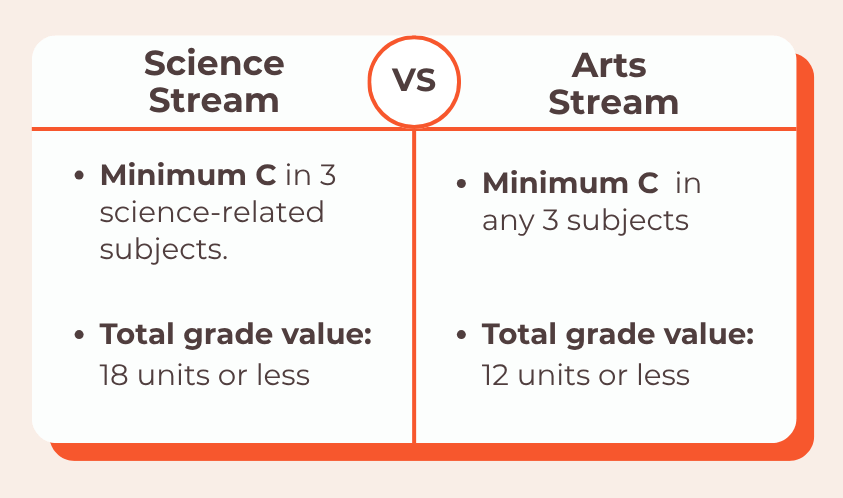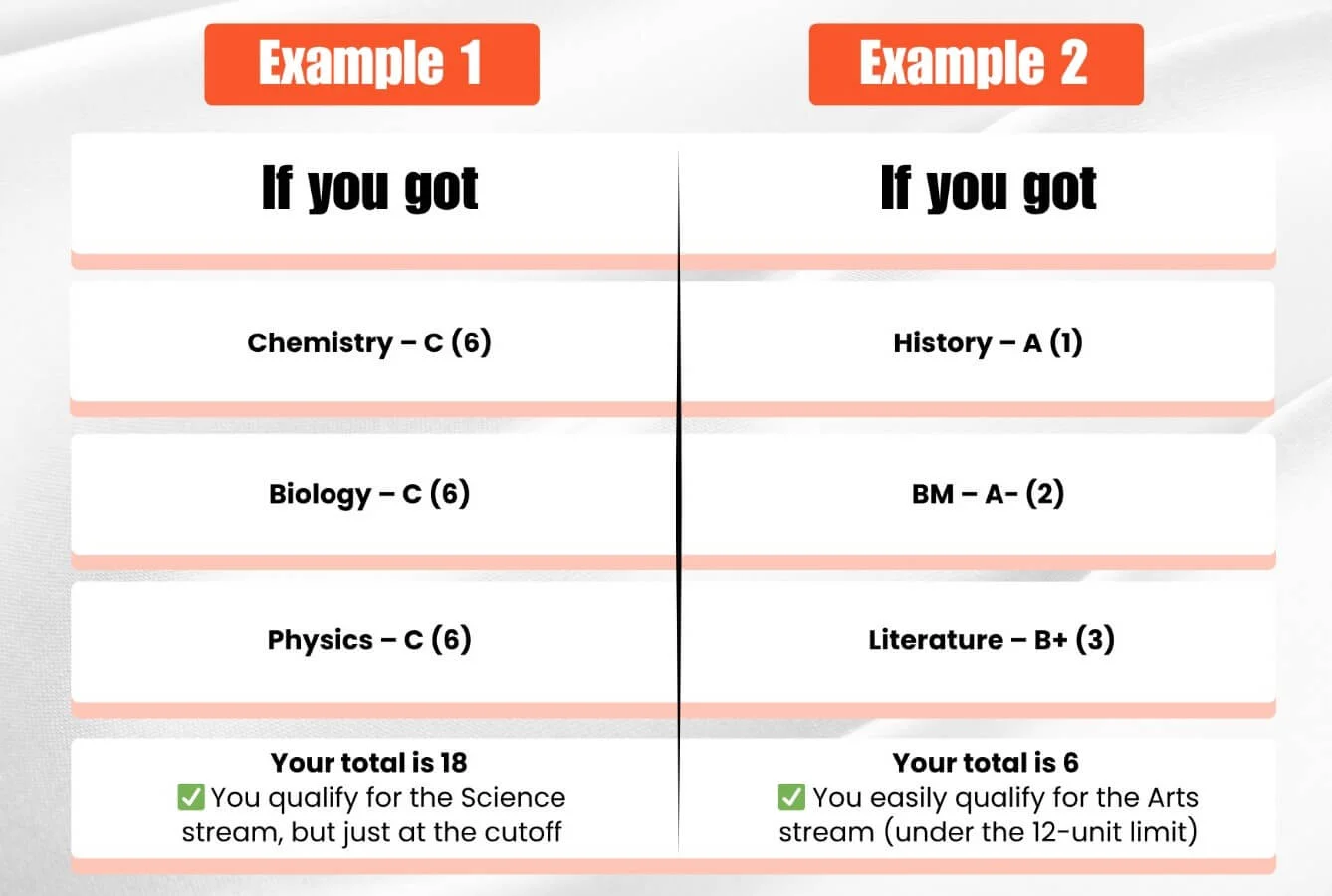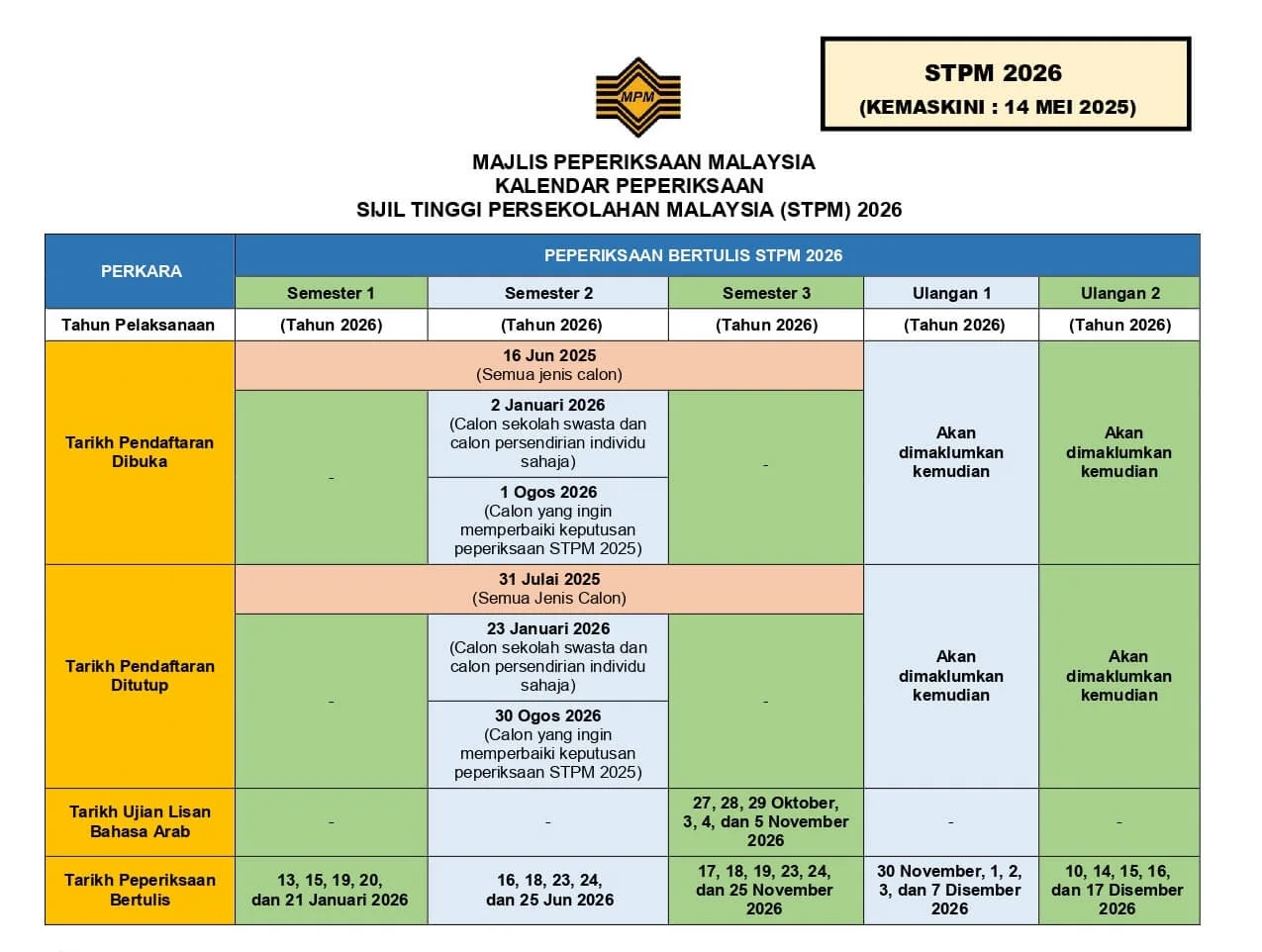STPM Malaysia 2025: Requirements, Subjects, Format & Tips
July 02, 2025
Mehmil

Just finished SPM and feeling the pressure to choose your next move?
Many Malaysian students find themselves caught between a maze of pre-university options: Foundation, Matriculation, A-levels… and then there’s STPM.
But how do you know which path is right?
If you’ve ever Googled or asked a senior “What is STPM Malaysia?” You’re on the right track.
In this guide, we’ll walk you through STPM requirements, subjects offered, assessment format, and how it compares to other pre-university pathways in Malaysia.
What is STPM?
STPM stands for Sijil Tinggi Persekolahan Malaysia, a national pre-university qualification offered in selected secondary schools (commonly known as Form 6). It’s government-funded, highly respected, and recognised by all public universities in Malaysia.
Unlike fast-track alternatives like Matriculation or Foundation, STPM duration is around 18 months across three semesters. This structure gives students more time to master core concepts, complete coursework, and build a strong academic foundation for university.
STPM qualification is accepted by all Malaysian public universities through the UPU system and is also recognised by many institutions overseas, especially in countries like the UK, Australia, New Zealand, and Singapore.
Is STPM equivalent to A-level?
Yes, STPM is often considered equivalent to A-levels. Think of it as a local alternative to A-levels but with a twist. Instead of relying only on final exams, STPM follows a modular system, meaning you’re assessed over three semesters. It also includes coursework through School-Based Assessment (SBA), which helps reduce last-minute exam pressure.
So if you're searching for a Malaysian pre-university programme that's affordable, widely accepted, and academically solid, STPM Malaysia 2025 might be the right path for you.
STPM Entry Requirements 2025
So, you're thinking about choosing STPM as your next step after SPM? Great choice, but let’s make sure you meet all the requirements.
Who is eligible for STPM?
| Requirement | Details |
|---|---|
| Minimum Qualification | Pass in SPM or equivalent |
| Age Limit | 17–20 years old |
| Required Subjects | Credit in Bahasa Melayu, pass in Sejarah |
| Stream-specific Grades | Science: ≤18 units; Arts: ≤12 units |
| MUET | Compulsory for all STPM candidates |
Minimum SPM Grade Requirements
To get into Form 6 and start your STPM journey, your SPM results need to meet these minimum requirements, based on the stream you want to enter:

i. For the Science Stream
- At least a C grade in 3 science-related subjects (like Biology, Chemistry, Physics, or Maths)
- Your total grade value for those 3 subjects must not be more than 18 units
ii. For the Arts Stream
- At least a C grade in any 3 subjects
- Your total grade value must not be more than 12 unit
On top of that, no matter which stream you choose:
- You must have a credit in Bahasa Melayu
- You must pass Sejarah (History)
Wait, what’s “Grade Value” and how does it affect my eligibility?
If you’re looking to enter STPM after SPM, one of the key things you’ll come across is your “grade value” or “unit value.”
But don’t worry, it’s actually quite simple once you understand the purpose.
When deciding if you're eligible for STPM, the Ministry of Education doesn’t just look at your SPM subject passes.
Every SPM grade is given a numerical value. The better your grade, the lower the number.
SPM Grade Table
| SPM Grade | Grade Value |
|---|---|
| A+, A | 1 |
| A− | 2 |
| B+ | 3 |
| B | 4 |
| C+ | 5 |
| C | 6 |
You’ll need to add up the grade values of your best 3 relevant subjects. The total you get is what determines whether you qualify for a particular stream:
- Science Stream: Total must be 18 or less
- Arts Stream: Total must be 12 or less

Even if you pass SPM, your total grade value is what confirms your eligibility for Form 6. The lower your grade value, the better your chances of getting into your desired school or stream.
So don’t just aim to pass, aim to score low (in grade value terms)!
What subjects are available in STPM?
STPM 2025 Malaysia offers 23 subjects. Subjects in the STPM syllabus 2025 are typically divided into three main categories based on streams: Core, Science, and Arts/Humanities. There are also language subjects and electives for those with specific interests or goals.
Core Subject (Compulsory for All)
| Subject | Malay Name |
|---|---|
| General Studies | Pengajian Am |
Everyone takes General Studies in STPM, it’s a must, no matter your stream.
Oh, and don’t forget, MUET (Malaysian University English Test) is compulsory too. It's a requirement for all public university admissions in Malaysia.
STPM Science Stream Subjects
Ideal for those interested in medicine, engineering, IT, or pure sciences
| Subject (English) | Malay Name |
|---|---|
| Mathematics (T) | Matematik T |
| Physics | Fizik |
| Chemistry | Kimia |
| Biology | Biologi |
| ICT | Teknologi Maklumat & Komunikasi |
These subjects are typically packaged together in most public schools. For example, a common combination for future medical students would be Pengajian Am, Mathematics T, Chemistry, and Biology.
STPM Arts Stream Subjects
Ideal for those pursuing law, education, business, accounting, or social sciences
| Subject (English) | Malay Name |
|---|---|
| History | Sejarah |
| Bahasa Melayu | Bahasa Melayu |
| Economics | Ekonomi |
| Business Studies | Pengajian Perniagaan |
| Mathematics (M) | Matematik M |
| Sociology | Sosiologi |
| Accounting | Perakaunan |
| Geography | Geografi |
These combinations are often tailored to your tertiary goals. For instance, if you're eyeing a business degree, you might go for Economics, Business Studies, and Mathematics M.
Language & Literature Subjects
If you're fluent in or passionate about languages, STPM also offers a variety of language-based electives:
| Subject | Malay Name |
|---|---|
| Chinese Language | Bahasa Cina |
| Tamil Language | Bahasa Tamil |
| Arabic Language | Bahasa Arab |
| Literature in English | Kesusasteraan Inggeris |
| Malay Literature | Kesusasteraan Melayu Komunikatif |
Other Electives
| Subject | Malay Name |
|---|---|
| Sports Science | Sains Sukan |
| Visual Arts | Seni Visual |
Common STPM Subject Combinations (Based on Degree Goals)
| Tertiary Goal | Suggested STPM Subjects |
|---|---|
| Medicine / Life Sciences | General Studies, Math T, Chemistry, Biology |
| Engineering / Tech | General Studies, Math T, Chemistry, Physics |
| Accounting / Business | General Studies, Math M, Economics, Business Studies |
| Law / Education / Arts | General Studies, Bahasa Melayu, History, Geography |
When choosing your STPM subjects, think long term. Ask yourself:
- What do I want to study in university?
- What subjects am I naturally good at?
- What’s offered in my school?
STPM Assessment Format & Grading System
You're probably wondering how the STPM exams are structured and how your final grades will be calculated. The STPM assessment format follows a modular system that spreads the pressure over three terms, giving you multiple chances to score well.
How is STPM Structured?
STPM runs across three semesters, often referred to as:
| Term 1 (P1) | Term 2 (P2) | Term 3 (P3) |
Each term covers different parts of the syllabus and ends with its own centralized exam. This means you’re tested progressively, no need to memorise the entire syllabus at once!
Assessment Components

Each STPM subject is assessed through two main components:
School-Based Assessment (SBA) contributes 20% to 40% of your final score
- Involves project work, field studies, coursework, or lab/practical tasks
- Done during school hours under your teacher’s supervision
Centralised Examination makes up the remaining 60% to 80%
- Conducted nationally by the Malaysian Examinations Council (MPM)
- Includes a mix of multiple-choice, structured, and essay questions
How is STPM graded?
STPM uses a 4.00 grading scale, similar to many university systems. Each subject you take is given a Subject Grade Point (SGP):
| Grade | SGP (Subject Grade Point) |
|---|---|
| A | 4.00 |
| A− | 3.67 |
| B+ | 3.33 |
| B | 3.00 |
| B− | 2.67 |
| C+ | 2.33 |
| C | 2.00 |
| C− | 1.67 |
| D+ | 1.33 |
| D | 1.00 |
| F (Fail) | 0.00 |
Your final CGPA is calculated by averaging your four best subject scores, including the compulsory Pengajian Am (General Studies).
Want to Get into Public University?
If you plan to apply through UPU (Unit Pusat Universiti), don’t just focus on academics! 10% of your admission score comes from co-curricular involvement, so join clubs, societies, or sports!
👉 For a full step-by-step breakdown, check out our UPU Application Guide 2025.
Can I Retake STPM Papers?
Didn’t do as well as you hoped in one of your STPM semesters? Don’t worry, STPM gives you a second chance (well, two chances, actually).
Here’s how the STPM resit policy works:
- You can retake papers from Semester 1 (U1) and Semester 2 (U2) if you're aiming to improve your grade.
- Semester 3 (P3) is final. There are no resit options for this term, so give it your all!
- However, if you need to improve your grade later, you can retake P3 in the next exam cycle as a private candidate.
Resit exams are typically held the following year, so you'll need to register through your school or via the Malaysian Examinations Council (MPM) website when the window opens.
📌 Important: You can resit one or more subjects, but only for U1 and U2 components. The best score will be used in your final CGPA, so it’s definitely worth the try if you think you can improve!
Who Should Choose STPM?

STPM (Sijil Tinggi Persekolahan Malaysia) may not be the flashiest option, but for the right student, it’s a smart, strategic, and cost-effective pathway to university.
Here’s who STPM is best suited for:
1. Targeting Public Universities: STPM is a top entry route for public universities via UPU, using your CGPA and co-curricular marks for placement.
2. On a Budget: STPM is offered in public secondary schools (Form 6) and is government-funded, making it one of the most affordable pre-university options in Malaysia.
3. Monthly Allowance: Form 6 students receive a monthly allowance: RM110 for Science stream, RM90 for Arts stream.
4. Prefer Exam-Based Learning: If you’re someone who does well in structured learning and don’t mind exams spaced over three semesters, this format works in your favour.
5. Looking for Global Recognition: STPM is A-level equivalent and accepted by universities in Malaysia and countries like the UK, Australia, and Singapore.
🚫 STPM may not be for you if:
- You prefer coursework-heavy, flexible programmes like Foundation
- You're aiming for private universities only (many offer direct Foundation routes)
- You struggle with exam pressure and long-term commitment (18 months)
If you're academically disciplined, want to save money, and are aiming for public university admission or internationally recognised options, STPM is definitely worth considering in 2025.
Key Dates (Tentative)
STPM Intake: 2025-2026

👉 Need full details on MUET registration, exam dates, and band scores? Read our complete MUET 2025 guide here.
Bottom Line
By now, you’ve seen what STPM offers, affordability, academic rigour, and recognition both locally and internationally. But the real question is: does it align with your goals and learning style?
If you're aiming for public university admission, prefer a structured and exam-focused format, and want a globally accepted qualification without breaking the bank, STPM is a strong choice in 2025.
However, if you are comfortable with coursework, want a faster route to university, or have already set your sights on a specific private institution, you might want to explore Foundation programmes or Matriculation instead.
Every student is different, and the best pre-university path is the one that fits your strengths, goals, and future plans.
Frequently Asked Questions
1. What are the STPM requirements in Malaysia?
To enter STPM, you must pass SPM or an equivalent qualification. You should be between 17 and 20 years old. A credit in Bahasa Melayu and a pass in Sejarah are also required. MUET is compulsory during Form 6.
2. How many subjects do you need to take in STPM?
Students typically take 4 to 5 subjects, including the core subject Pengajian Am and elective subjects based on their chosen stream (Science or Arts). MUET is an additional compulsory exam.
3. Is STPM difficult?
Yes, STPM is known as one of the most challenging pre-university programmes in Malaysia. It requires consistent effort over three semesters and includes both coursework and centralized exams. However, students who are disciplined and exam-oriented can perform well.
4. Is STPM better than Matriculation?
STPM is more internationally recognised and follows a merit-based admission system. Matriculation is shorter and more coursework-based but has a quota system for entry and is mainly accepted by public universities in Malaysia.
5. Can I apply to university with STPM?
Yes, STPM is accepted by all Malaysian public universities via UPU and is also recognised by many international institutions. It’s equivalent to A-levels in terms of university entry qualification.
6. Can you retake STPM exams?
Yes, you can resit Semester 1 (U1) and Semester 2 (U2) papers. However, Semester 3 (P3) exams cannot be retaken. The highest grade from multiple attempts will be used in your final CGPA.
7. What is the difference between STPM and A-level?
Both are equivalent pre-university qualifications. STPM is government-funded, modular, and takes over 18 months. A-levels are privately offered, fully exam-based, and often costlier.
Kickstart your education in Malaysia
We'll help you find and apply for your dream university
You might be interested in...
- Global Learning at the Crossroads: Canada–Malaysia’s Evolving Education Partnership
- How AI is Powering the Next Wave of MSME Growth in Malaysia
- Malaysian Private Universities Making a Mark in Global Rankings
- Benchmarking Malaysian Private Universities Against Their ASEAN Peers
- Fastest-Rising Malaysian Universities in the QS Rankings (2023‑2025)
- Sunway University Climbs to Global Top 500 in QS Rankings 2026
- Trusted by Top Universities: EasyUni’s Exclusive Visit to Sunway University
- Wawasan Open University and Sophic Automation Partner to Offer Work-Based Learning for Engineering Students
- Sunway University: Malaysia’s Best Cambridge A-Level College with 11 Years of Excellence
- Top Malaysian Universities in QS Asia Rankings 2025
 +60173309581
+60173309581





